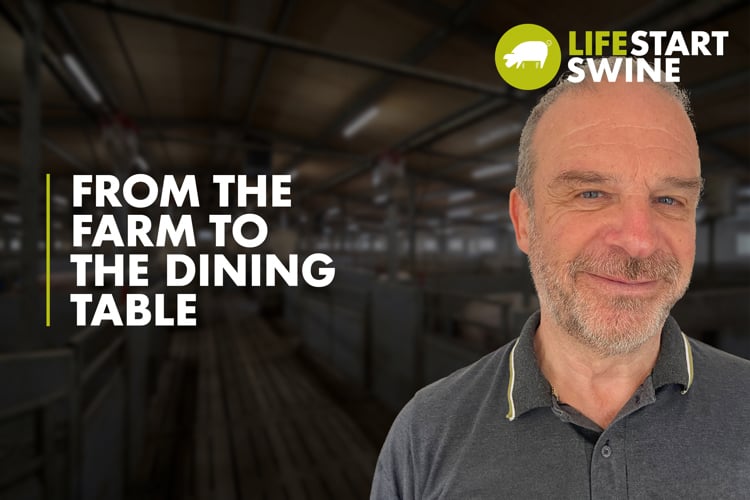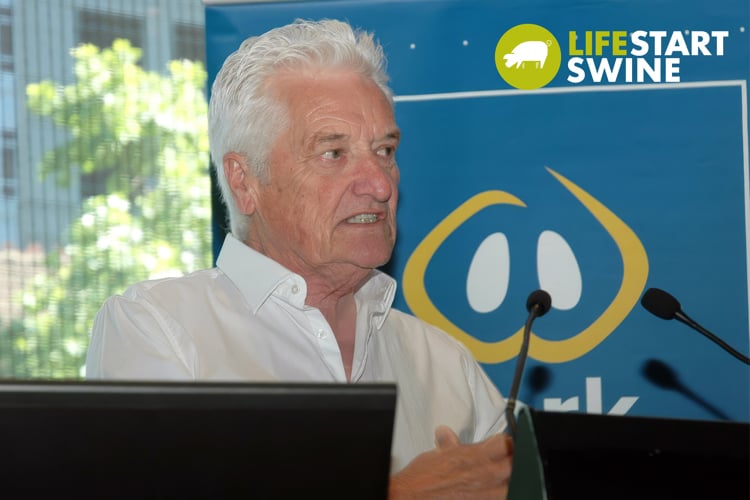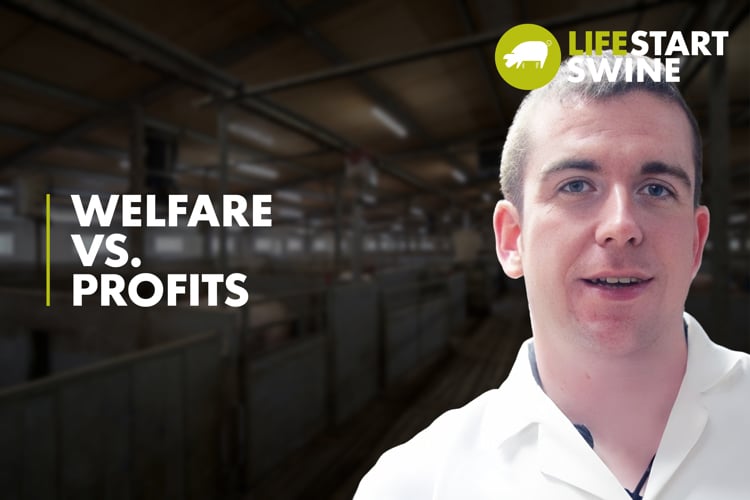
- 2022
- COMMUNITY STORIES
Dr. Ines Andretta - Federal University of Rio Grande do Sul / Brazil
As a professor, nutritionist and researcher in swine production over the last decade, I spend much more time studying pigs than I do reading about any other subject. Piglets are undeniably adorable and the more I study pigs, the more I think they are fascinating for so many reasons! Scientific evidence supports that pigs are intelligent, socially organized, and communicative. Pigs are capable of time perception, memory, and learning. Some studies even indicate that pigs can be optimists or pessimists, depending on their personalities. Pigs also share surprising traits that are comparable to those of human beings, and that is probably the fact about pigs that has most caught my attention over the last few years.

I have always believed that understanding more about the pig’s physiology can help us comprehend ourselves (as human beings). Despite some misunderstandings (surprisingly, some people do not like to be compared with a pig!), the similarities between pigs and humans have been very helpful in my life. For instance, whenever I faced a health problem, I tried to think of something similar in swine and it usually helped me understand my issue.
I don’t know why, but I rarely ever made the inverse relationship! In other words, I did not use my own experiences to understand the pigs further, but that changed when I became a mother! Parenting always comes with a lot of changes, right?
I experienced a high-risk pregnancy, and researching each condition helped me deal with the stress. So, I read a lot about placentation issues in humans and (why not?) also in pigs. I studied embryology, fetal nutrition, and risk management. I learned about the developmental milestones of pig gestation each time I reached a milestone in my own pregnancy. My husband is a vet who also works with swine nutrition. When our healthy son was born, we started a “hands-on experience” on early life development that certainly taught us more than several courses. I’ve lost count of the times we discussed the ingredient composition of the baby formulas (no, we did not compare baby formulas, the real fun was to compare them to the piglet starter diets). And I can list so many comparisons that we made. For example, we compared the similarities between first foods, the duration of passive immunity, the first days in the nursery stage (consequently for the enteric and respiratory challenges that came with it), for weaning, and so on.
When I was diagnosed with postpartum depression, I tried to understand the factors that lead me to this condition. After some research, I came to a study that compared the predictors for postpartum depression to the challenges that sows face in commercial pig production (Daigle, 2018). In women, this disorder affects up to 15% of new mothers, mainly those experiencing motherhood for the first time, who were exposed to stress during pregnancy, or those who had reduced social support. If those are challenges for women, how are sows dealing with the same risk factors on the farms?
Oprah Winfrey once said, “Biology is the least of what makes someone a mother.” In fact, there are some transformations during pregnancy and postpartum that are difficult to explain, even from a biology standpoint. Most of them are beautiful and full of joy, but some can be very painful too. Being a mother is learning about strengths and fears you didn't know you had. The physical, psychological, and social shifts faced by a woman during and after pregnancy are huge and undeniable! So, if pigs and humans are so similar, how do sows face these similar experiences? Have you ever thought about it? I did many times during the last few years and I would recommend that anyone working in pig production stop for a minute to do the same exercise! Please, try thinking about the sows from a mother's perspective, OK?
How challenging is taking care of 15 piglets at the same time? How difficult is producing enough milk so the piglets double their body weight just some days after birth? How hard is it to deal with the piglets’ weaning and with a new pregnancy in such a short period of time?
Sows are super moms, and they deserve our attention! We’ve studied and handled their piglets so much. However, I believe we need to invest more time studying and caring for the mothers! Research projects focusing on sows are usually expensive and hard to manage, but I believe that sows do deserve more attention! Healthy and happy sows can establish a better life start for the babies, which (as well as with humans) can impact their entire lives!
Most “normal” parents have a beautiful list of things that they learned from parenthood. Well, after becoming a mom, I cannot look at sows the same way as I did before! How awkward would it be if I discuss what motherhood has taught me about pig production?
References
Daigle C. Parallels between Postpartum Disorders in Humans and Preweaning Piglet Mortality in Sows. Animals. 2018; 8(2):22. https://doi.org/10.3390/ani8020022


